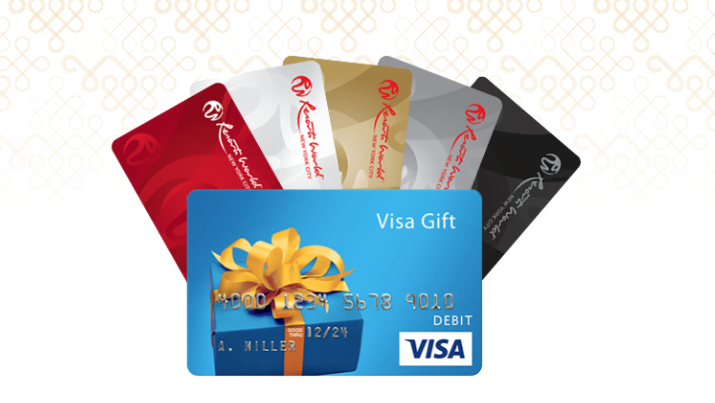- EasyCard
- Trade
- Help
- Announcement
- Academy
- SWIFT Code
- Iban Number
- Referral
- Customer Service
- Blog
- Creator
Convenient Ways to Use Visa Gift Cards for Payments and Remittances in Europe
With the continuous evolution of global payment methods, Visa gift cards have emerged as a convenient option for shopping and remitting in Europe. Users can not only utilize Visa gift cards for online shopping and ATM withdrawals but also for international payments, enjoying low transaction fees and a straightforward transaction process.
This article will elaborate on various ways to use Visa gift cards in Europe, how to ensure the security of funds during remittances, avoid common issues, and offer practical advice on using Visa gift cards for efficient payments.

How to Use a Visa Gift Card for Payments in Europe?
Visa gift cards are widely used in Europe. Users can employ them for daily shopping, much like traditional credit cards. Supporting euro - denominated payments, Visa gift cards are an ideal choice for European users. Whether it’s online shopping or in - store purchases, Visa gift cards can process payments swiftly. Users simply need to ensure there is sufficient balance on the card and fill in the correct card number, expiration date, and security code during the transaction to complete the payment.
Unlike other payment methods, one of the major advantages of Visa gift cards is the ease of spending control. Users can pre - deposit a certain amount in the card, avoiding the potential debt risks associated with traditional credit cards. As a result, Visa gift cards are not only a convenient shopping tool but also the preferred payment method for many travelers in Europe, especially for those who prefer not to disclose their bank account information.
What to Note When Withdrawing Cash from an ATM?
Visa gift cards can be used not only for paying for goods and services but also for cash withdrawals at ATMs, making them a flexible fund - management tool. In Europe, users can withdraw cash from Visa - supported ATMs using their Visa gift cards. However, when using a Visa gift card to withdraw cash, users need to be aware of the relevant regulations and fees in advance.
First and foremost, users must set a personal identification number (PIN) for the Visa gift card. This step is essential for ATM cash withdrawals.
Although Visa gift cards can be used at many ATMs, not all of them support the card. Therefore, it is advisable for users to confirm whether the local ATM supports the card before making a withdrawal. Additionally, different banks and ATM service providers may impose limits on withdrawal amounts, transaction fees, and the number of withdrawals per month. Generally, ATM withdrawal fees are relatively high, so users should avoid frequent withdrawals to save on additional costs.
How to Use a Visa Gift Card for Remittances and Transfers?
One of the primary advantages of Visa gift cards is their applicability for international remittances, particularly when foreign exchange payments are required. Users can purchase Visa gift cards through remittance service providers and conduct transactions based on the euro, making it an efficient tool for cross - border remittances. For instance, when users need to transfer funds to other countries or remit money to family and friends, they can opt to use a Visa gift card as the payment instrument. This method is not only simple and fast but also helps users save on the high transfer fees charged by banks.
For users remitting with a Visa gift card, especially through some Visa - supported remittance platforms, the funds in the card can be quickly transferred to the designated account. Users only need to enter the recipient’s information and confirm the transfer. Since Visa cards are widely accepted by major financial institutions worldwide, this remittance method is highly suitable for users who frequently make international payments.
Exchange Rates and Fees for International Payments with Visa Gift Cards
When users make cross - border payments or remittances via Visa gift cards, exchange rates and transaction fees are two crucial factors determining the transaction cost. In Europe, Visa gift cards support euro payments, but users should pay attention to the currency exchange rate when using them. During the remittance process, currency exchange differences may affect the final payment amount. Ensuring the use of the most competitive exchange rate is of great significance for users’ remittance costs.
Furthermore, Visa gift cards generally do not charge transaction fees. However, depending on the remittance service provider, the fees may vary. Some service providers may charge a fixed fee or a percentage of the remittance amount. To obtain the best deal, users should choose a remittance service platform that offers a transparent fee structure and a reasonable exchange rate.
Accessing the Visa Website and Checking the Balance
To ensure there are sufficient funds in the Visa gift card for payments or remittances, users should regularly check the card balance. Fortunately, Visa provides convenient ways for users to check the gift card balance at any time. By visiting the official Visa website, users can easily view the remaining balance and transaction history. Additionally, users can also check the card balance by calling the customer service hotline or using the Visa mobile app.
Before making a cross - border remittance or payment, confirming the balance is an important step to avoid transaction failures due to insufficient funds. Ensuring an adequate balance in the card facilitates the smooth completion of shopping, remittances, or other transactions.
Conclusion
Visa gift cards offer users in Europe convenient, secure, and flexible options for payments and remittances. Whether for shopping, cash withdrawals, or cross - border remittances, Visa gift cards can provide a fast payment experience with low fees. When using Visa gift cards for transactions, users should pay attention to factors such as exchange rates, transaction fees, and withdrawal limits to ensure the best payment experience and cost control. For those looking to avoid the complex and costly procedures of traditional bank transfers, Visa gift cards are undoubtedly an attractive option.
If you’re seeking a convenient, secure remittance method with no limits, BiyaPay could be your ideal choice. BiyaPay uses a local remittance approach to ensure the swift and secure arrival of funds and supports remittance needs across multiple countries and regions. Through BiyaPay, you can enjoy a hassle - free remittance experience.
*This article is provided for general information purposes and does not constitute legal, tax or other professional advice from BiyaPay or its subsidiaries and its affiliates, and it is not intended as a substitute for obtaining advice from a financial advisor or any other professional.
We make no representations, warranties or warranties, express or implied, as to the accuracy, completeness or timeliness of the contents of this publication.




Contact Us
Company and Team
BiyaPay Products
Customer Services
is a broker-dealer registered with the U.S. Securities and Exchange Commission (SEC) (No.: 802-127417), member of the Financial Industry Regulatory Authority (FINRA) (CRD: 325027), member of the Securities Investor Protection Corporation (SIPC), and regulated by FINRA and SEC.
registered with the US Financial Crimes Enforcement Network (FinCEN), as a Money Services Business (MSB), registration number: 31000218637349, and regulated by FinCEN.
registered as Financial Service Provider (FSP number: FSP1007221) in New Zealand, and is a member of the Financial Dispute Resolution Scheme, a New Zealand independent dispute resolution service provider.




















